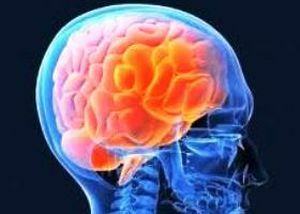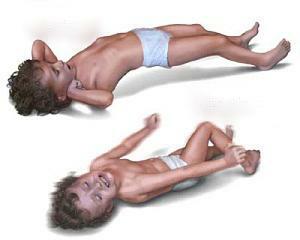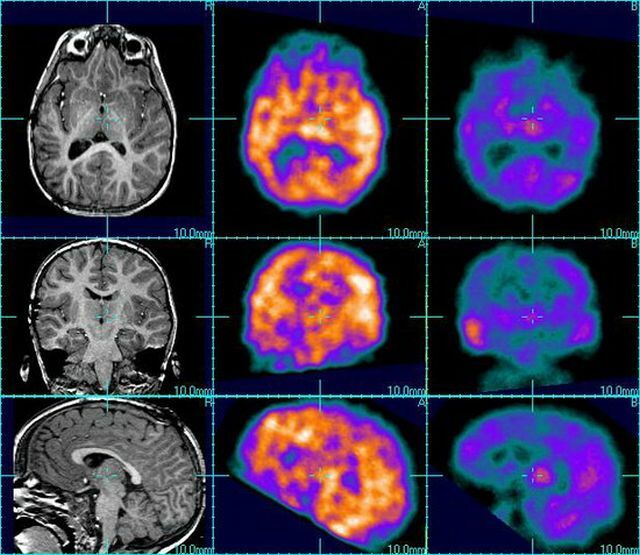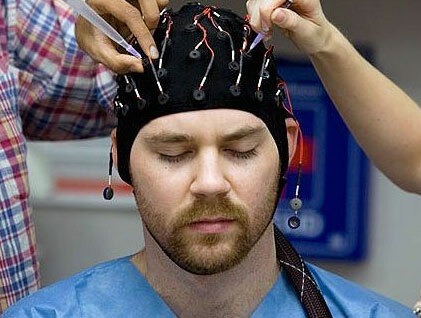 Jackson epilepsy is one of the forms of ordinary epilepsy, first identified by the French physician Brava in 1927.
Jackson epilepsy is one of the forms of ordinary epilepsy, first identified by the French physician Brava in 1927.
Shortly before, the disease was described by an English neurologist named Jackson, after whom he was named.
After carefully studying the medical history of people complaining about private cramps in the arms, legs and face area, Jackson came to the conclusion that he is dealing with epilepsy, manifested as focal seizures, starting from the muscles of one side of the body.
The main sign of a beginning attack of the disease in most cases is a slight tingling of the fingers and toes, less often reduces the entire arm, or the leg.
By itself, Jackson's epilepsy, unlike usual, is not dangerous, since it does not lead to death.
The only drawback is a sharp unpleasant sensation, because of which some people have a temporary clouding of consciousness, accompanied by a faint.
Jacksonian seizures
Jackson epilepsy is accompanied by seizures, a characteristic feature of which is the finding of a person in their right mind and memory, or rather, consciousness.
Each seizure has its own characteristics, but many patients who suffer from this form of epilepsy since childhood have learned to cope quite well with them without resorting to medical care.
The first convulsions begin in the anterior part of the brain, from where they impulse pass into the affected part of the body. A cramp that engulfs the finger of the left hand can only be located there, and can hit the same finger on the right arm.
Thus, the seizure does not extend to the entire arm as a whole, but is transferred to the same body division, but in a parallel area of the .
To ease the intensity of convulsive muscle contractions, you can stop the affected area, preventing further spreading.
Foot cupping can be done by usual tight tightening with both hands, or with an easy, but confident massage. The same actions should be taken and curing any other part of the body.
There are the following types of seizures:
- Jackson's march - a series of successive seizures, the interval between which is extremely small;
- seizure, affecting the muscles of the face;
- seizure, which is located in the muscles of a separate part of the body.
What is the cause of the disease?
There are so many reasons for epilepsy in this form that it can only be revealed after a thorough examination using  of modern medical equipment.
of modern medical equipment.
The most common causes of epilepsy are:
- Traumas received by the cerebral cortex after strong strokes of , or previous operations.
- Anomalies of found in cerebral vessels.
- Detected tumors of , moreover, not only in the brain, but also in other parts of the body.
- Inflammation of the shell and bone marrow substance , or meningoencephalitis. The disease disrupts the basic functions of the cerebral cortex and can cause seizures leading to epileptic seizures.
- Congenital diseases .In rare individuals, the first seizures occur even in childhood, which is considered normal, since it is associated with heredity. As they grow older, their number and intensity decrease significantly, and by 20-25 years seizures may disappear altogether, appearing only in old age.
 Recovering speech after a stroke is an important and difficult task. Techniques and exercises are studied in detail in our article.
Recovering speech after a stroke is an important and difficult task. Techniques and exercises are studied in detail in our article.
Hydrocephalus in newborns is a serious disease that affects the infant's brain. What treatments for the disease exist?
Clinic of the disease
When studying this type of epilepsy, doctors all over the world note that most of their patients are conscious, while their body is shaking with convulsions.
The above characteristic signs of the disease lead to the conclusion that the cause of the disease lies not in the part of the body affected by the spasm, but in the brain.
A person who has fallen into an epileptic seizure - stands, can move, soberly reason and even sing, if for that he will have a desire.
The clinical picture of the disease is such that a patient who seeks a doctor with convulsions can stand up after a few minutes and leave freely, which indicates how fleeting can be a fit.
The seizures that have started may also stop suddenly, as well as appear.
Young people suffering from this form of epilepsy are somewhat easier to transfer its manifestations, because in old age, after the contractions of muscles that have stopped, temporary epileptic paralysis may occur.
Fixation of the presence of paralysis also indicates that there is inflammation in the motor cortex of the cerebral cortex.
Diagnosis of the disease
 It is extremely difficult to determine whether the patient has a disease, because the seizures that accompany the disease are easily confused with myoclonic, for which violation of speech activity and consciousness is considered to be characteristic.
It is extremely difficult to determine whether the patient has a disease, because the seizures that accompany the disease are easily confused with myoclonic, for which violation of speech activity and consciousness is considered to be characteristic.
Epileptic seizures can cause hysteria in patients who have experienced them for the first time, therefore at the first stage of diagnosis an inexperienced doctor can easily confuse Jackson epilepsy with usual hysteria.
The diagnosis should be started by referring the patient to a fuller examination of the brain and the whole organism.
Patients are required to undergo electroencephalography, where in the presence of the disease there may be discharges of epileptic activity.
The final diagnosis is made only on the basis of the results of all analyzes, but the primary diagnosis can also be made based on the nature of the seizures and the patient's disorders related to sensitivity disorder and head trauma.
The video discusses the symptoms and treatment of Jacksonian and other types of epilepsy.
Approach to treatment
To treat the disease is difficult, because all the efforts of doctors in this case should be aimed at eliminating not the symptoms, but the disease itself.
Usually, the course of treatment lasts at least a year, during which the patient is prescribed the following anticonvulsant drugs: lamitcal, benzonale, phenobarbital, difenine and hexamide. 
And also medicines in the composition of which there is valproic acid. To treat the disease also try and by providing stimulating effects on the vagus nerve.
The patient can be assigned resorption, dehydration and restorative drugs.
In the event that none of the above medicines has had the proper effect, the patient may be recommended to contact a neurosurgeon to identify the underlying causes of the disease.
Forecast
As a matter of fact, Jackson's epilepsy to dangerous and life-threatening diseases can not be attributed, rather - it is an unpleasant and disturbing detail when compared with ordinary epilepsy, accompanied by a violation of consciousness and loss of certain body functions.
The prognosis for this disease is very comforting, it is not badly treated, and with timely access to a specialist, the number of seizures can be markedly reduced.
The cause of this form of the disease can be a variety of diseases associated with inflammatory processes in the brain, or heredity.
The disease is treatable, but on condition that the patient is ready to go on the way to recovery for at least a year. The main sign of the presence of the disease is convulsions in various parts of the body - usually in the hands, or legs, less often - the face.



